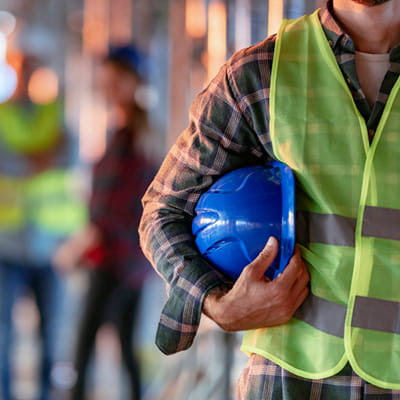Public and product liability: Tips for getting the right cover for your customer
- Public and Product Liability insurance provides protection against third-party injury and damage claims
- Understanding prior, current and future risks is the key to getting the right coverage for your customers
- Combined Liability insurance can add an additional layer of protection
What does Public and Product Liability insurance protect against?
QBE’s Public and Product Liability insurance is designed for medium businesses to large corporations, providing protection against liabilities arising from third-party claims, including:
- Personal injury claims – such as a member of the public seeking compensation after falling at your customer’s premises.
- Property damage claims – such as damage caused by your customer’s employees or products.
- Advertising liability claims – such as a competitor suing the business for defamation.
Trent Koenig, QBE’s Head of Commercial Underwriting, Commercial Liability Business, Australia Pacific, says, “While Public and Product Liability insurance isn’t mandatory in Australia, the majority of businesses will have it. In some cases, it may be required contractually, while in others, it’s used as an important part of managing risk.”
Ensuring customers have the right cover is a key aspect of building business resilience, and to do so, it’s important to explore all risks they may be facing.
What level of cover do your customers really need?
QBE provides liability capacity up to $50 million, with the option to extend to $100 million for third-party property damage, personal injury, or advertising liability1.
It’s important to consider the nature of the business, the environment they operate in and the types of customers they serve – as well as the amount of cover that’s required.
“In this sector of insurance, costs have risen over recent years,” says Koenig.
“For example, where 10 to 15 years ago, $5 million may have covered a greater proportion of loss scenarios, the reality today is different. We continue to see rising average claim costs, influenced by a variety of factors such as inflation, an evolving litigation environment, business growth or the fact we now live and work longer than ever before. It’s imperative to take these into consideration when choosing the level of cover required for your customer.”

How does the business’ industry influence the level of cover needed?
The type of business your customer is involved with will affect the level of cover needed, based on the risks their line of work exposes them to.
For example, a business such as an indoor play centre could face significant exposure if a child sustains an injury that leaves them requiring full-time care.
It’s also important to consider the environment they’re working in, as this will often affect the level of risk.
For instance, the damage caused by water leaking as a result of a mistake made by a plumber working on a single-storey residential property would be vastly different to the damage caused by the same mistake made on the 30th floor of a multistorey building.
Another key consideration is product accumulation.
“For example, the exposure of a farmer supplying food to a few local restaurants would not be as great as that of a farmer supplying a national chain,” says Koenig.
What is Combined Liability insurance, and when should it be considered?
While Public and Product Liability insurance needs an initial injury or damage to trigger a financial loss, Combined Liability insurance can also cover a pure financial loss resulting from things like product failure2.
“For example, say a manufacturer’s product enables a business to produce 10,000 parts per day. One day the product fails and can only produce 5,000, and the assembly line needs to be closed for two days while a replacement is fitted or repair is carried out, Combined Liability insurance could cover the manufacturer for the business’ financial loss,” says Koenig.
What should brokers ask their customers to ensure they have the right level of Public and Product Liability insurance cover?
Do you have any contractual agreements with other parties?
It’s important to know of any contractual agreements that your customer has in place, as some may not be automatically covered by the policy.
Contractual agreements can range from tenancy agreements with a landlord or tenant, or a supply agreement with a principal on a site.
Hold harmless agreements are another contractual arrangement that could affect public and liability insurance.
“For example, if your customer supplies components that are used in a larger piece of manufacturing equipment, a hold harmless agreement may be beneficial in the event of that piece of equipment causing damage or injury,” says Koenig.
Does your business hire contractors or labour to operate?
There are two key elements to consider regarding the contractors and labour hired by the insured business.
One area is considering the potential injury or damage that their work could cause to third parties; however, the primary consideration should be to any injury they could suffer on site.
While an injury to an employee would likely be covered by Workers Compensation, injury to contractors or labour hire may fall under Public and Product Liability insurance, so it’s important to understand the risk customers have in this regard.

How did you operate your business in the past, and what are your future operational plans?
Understanding what your customer’s business does is key to providing the right cover for their needs. Many businesses changed the way they operate in recent years – from what they do to how they resource it – leaving them open to new areas of risk.
As well as the current exposure, it’s important to understand the extent of prior experience. For example, has the business supplied parts that are being used in thousands of machines around the world, or has it sold tinned goods that are still on the shelves?
And what about future exposure? What is the business planning that could create new risks that need to be considered?
To aid this process, our Minimum Information Guideline can help you cover all bases. By collecting and sharing detailed information at the time of application, we’ll be able to provide you with a quote. Our locally based underwriters and claims teams are on hand to help at every stage.
Find out more
For more information, visit our Public and Product Liability and Combined Liability insurance page, or contact your QBE representative.
In search of more insights? Discover more from our team of experts over at Q Academy.
1 QBE Public and Product Liability insurance flyer
2 QBE Combined Liability Information Flyer 2023
